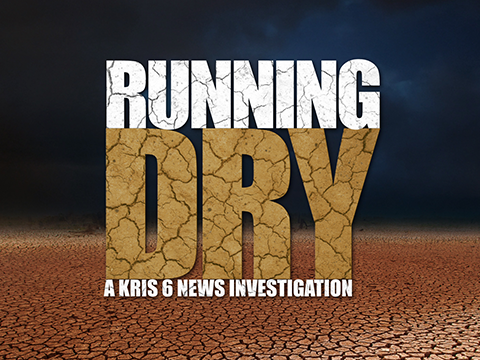CORPUS CHRISTI, Texas — Local farmers have a lot to be concerned about with the lack of rain the Coastal Bend has seen in 2022.
Crop yields are expected to be down in Nueces County come harvest season.
Farmers also need to worry about having enough water, and food, for their livestock.
“We’ve been blessed that we’ve had a little more rain than most people did in the area, however, the pasture conditions are definitely a B-, C+ right now,” said Joe Knolle, owner of Knolle Dairy Farms in Sandia.
Knolle’s cattle feed on grass, and the little rain his fields have received have been enough to sustain his cattle, so long as he rotates the pastures they can feed in.
Knolle has also put an emphasis on not stressing out his livestock in the summer heat.
“We’re only bringing them in once an evening to milk, at the coolest point in the day we can find,” he said. “The rest of the time they’re out here, they’re grazing in the early morning, they’re grazing at night. During the day, they’re taking a breather, they’re sitting here ruminating, and trying to produce milk.”
In one of his fields, Knolle has an irrigation system that he’s using to grow crops that he can turn into feed for his cattle.
However, that has brought in some unwanted guests.
“Unfortunately, we’ve created a little bit of an oasis in the desert, so we have a very high feral hog consolidation,” Knolle said. “It’s like ringing the dinner bell, and once they’re in, they’re not going to leave.”
Outside of Taft, Daniel Wendland has more than 300 cattle. Wendland described the drought as ‘tough,’ and said if he doesn’t get some rain in the next 60 days, he’ll start having to sell up to 75 percent of his livestock.
“If the drought doesn’t break, we’ll begin to sell off our older cows, all of our calves, and from there, we’ll step into selling off our commercial cows,” he said. “We’ll end up selling our purebred stock up until we can manage the last and the best group.”
On top of running out of hay to feed his cattle, Wendland is also running out of natural water.
He said about 50 percent of the ponds on his land have dried up.
“They will make up at least 50-75 percent the year of water,” he said. “When you lose your natural sources, all your ponds and stuff, you’ve lost almost all your water.”
Wendland has well water he can keep full, thanks to solar panelling and auto-filling, but that has attracted other animals onto his property — including deers, coyotes, bobcats, and even mountain lions.
The one silver lining Wendland has seen with his natural water sources drying up: the alligators that usually frequent those water sources, and typically kill some of his livestock, are no longer there.
“We haven’t lost near as many livestock to alligators,” he said. “But the other predators are sticking around the water sources, and that’s where the cattle are. So, we have to watch our calf crop very closely, to make sure they don’t kill too much of that.”




